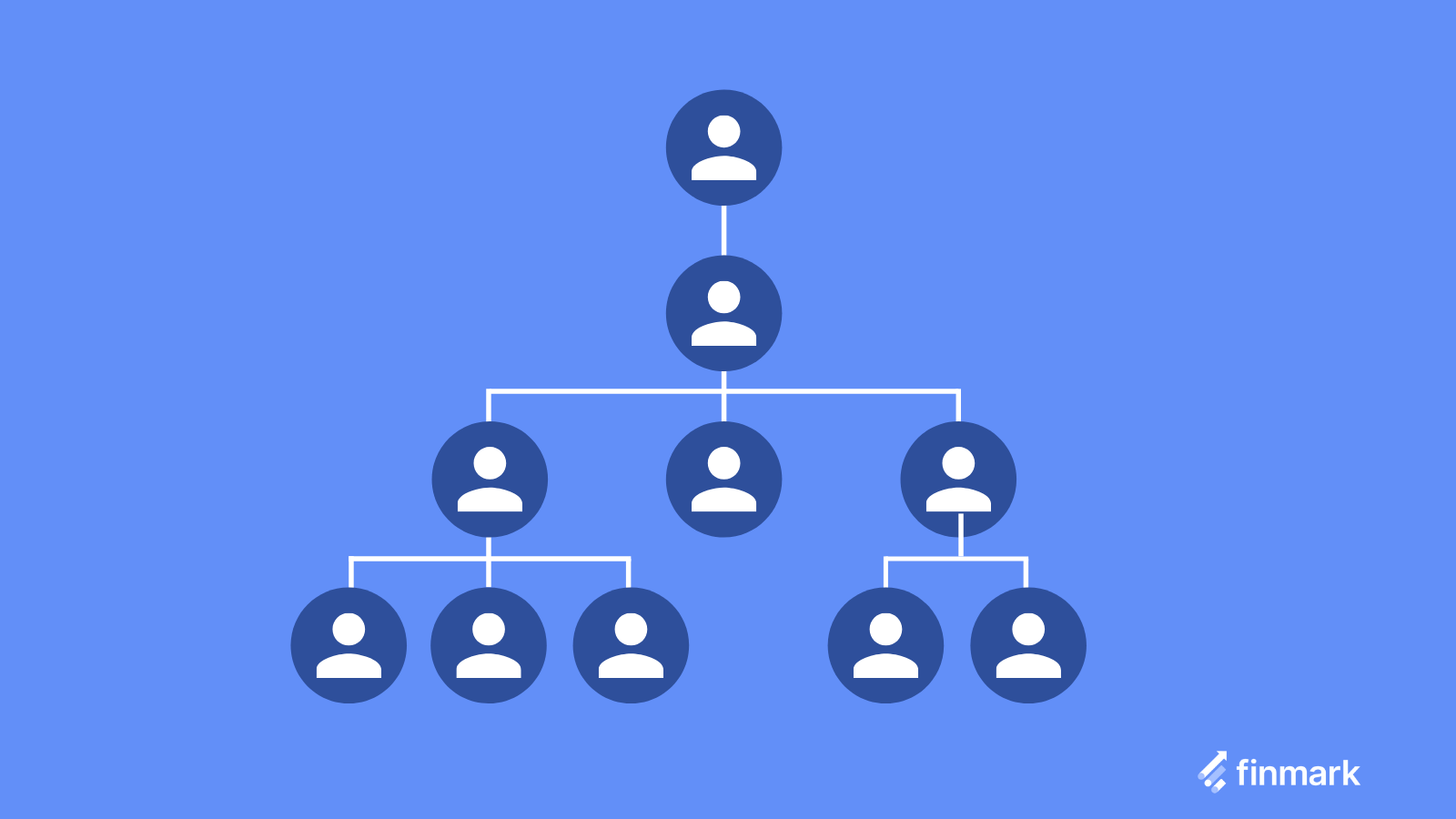How to do Headcount Planning (The Right Way)

Many founders take a “figure it out as you go” approach to hiring, which while agile, isn’t conducive to building a strong team that is not only operationally effective, but financially efficient.
The process of mapping out the key hires you need to make and for what roles, in order to reach your organizational goals, is called headcount planning.
While headcount planning may traditionally be the stuff of HR departments in large, existing enterprises, it also has a crucial role to play in launching and growing a startup.
In this article, you’ll learn how to complete headcount planning for your company, and build a clear, logical pathway to growing a team of capable, confident, competent employees.
What is Headcount Planning?
Headcount planning (also referred to as org charting or workforce planning) is the process of planning your organizational structure in terms of employees and then making a plan to hire new staff to fit that structure.
We’re going to discuss the process in more depth shortly, but at a high level, headcount planning looks something like this:
- Determine your organizational growth goals
- Build a chart of the employees you’ll need to have onboard to achieve those goals
- Highlight the gaps between your current headcount and your desired structure
- Hire to fill the gaps
Makes sense, but why bother? Can’t you just put an ad out each time you realize you’ve got a position to fill?
Not quite.
Why Do Startups Need to Engage in Headcount Planning?
The most obvious reason for startups to invest in headcount planning is it ensures you’re hiring new employees to achieve your growth goals.
This starts with the assumption that you want to grow (kinda the plan, right?). To deliver that growth you’ll need people on the sales and marketing side driving revenue, and people on the operations and administration side delivering your product or service to customers.
Headcount planning ensures you hire cleverly, and in line with your company’s growth goals, rather than simply filling gaps as they arise.
It’s about being proactive, rather than reactive.
But there are a few other benefits that come from engaging in headcount planning.
Improved Budgeting
Having a map of all the roles you need to hire for, when you’re going to hire, and the costs involved with that (such as job advertisements, recruitment agency fees, and training and onboarding costs) allows you to make informed budgetary decisions and ensures you’ll have the available cash flow to meet these hiring needs.
Plus, you’ll have a clear idea of the equipment you need to purchase (such as laptops, desks, and office chairs), so you can accurately budget for this investment also.
Cost Efficiency
There are many cost efficiencies to be gained by hiring several employees at once.
If, for example, you identify through your headcount planning process that you need to hire three new sales reps, you’ll benefit from a cost-saving in that you’ll only need to advertise once, and can potentially even arrange to train all the reps at the same time.
Stronger Case for Funding
If, like many startups, you intend to approach investors and hopefully raise some funding, then having a clear organizational chart and map of the roles you need to hire for will help demonstrate that you have a strategic vision for the company and a roadmap to achieving it.
Prepare for Compliance
Your obligations as an employer change as headcount grows.
For example, in the U.S., the Affordable Care Act (ACA) requires companies with 50 or more employees to provide affordable group health insurance.
Engaging in headcount planning from the outset allows you to plan effectively for changes such as this, rather than suddenly realizing you’ve passed an important threshold.
How to Do Headcount Planning in 9 Steps
1. Determine Who Is Responsible for Headcount Planning
First, it’s important that we determine exactly who is responsible for the headcount planning process.
Traditionally, human resources leaders would be responsible for leading this process, though they’d often engage with executives and department leaders to understand growth goals and operational details, respectively.
In the case of an early-stage startup, however, an HR department might not yet be established, so it’s likely that this responsibility will fall on the CEO or company founder(s).
In any case, your finance department should be heavily involved in this process.
2. Identify Business Goals and Challenges
We’re going to start by listing out the organizational goals we have, particularly as they relate to growth.
For example, you might have set an objective to triple revenue this year.
Then, add to this list any challenges you’re currently facing, as they relate to hiring new employees.
For instance, if you’re falling behind on your lead generation objective (thereby minimizing sales’ ability to close new revenue), make a note of it.
Gaining absolute clarity on this information provides the lens through which you’ll determine the key hires you need to make.
3. Gather Important Data
Depending on how established your company is, and the systems you use to track company operations, you may be able to draw on crucial data that will highlight areas of inefficiency.
For example, your payroll system should be able to provide a report on employee overtime over the last six months.
If, say, overtime is especially high for employees in a given role (dispatch, say), then this may point to a need to hire new staff and relieve pressure on that department.
4. Gather Feedback from Current Employees
Data can only tell you so much (and it’s largely about what you’re able to infer from it).
Use it to your advantage, but don’t neglect the process of getting down on the ground and speaking with your current team.
These conversations can shed light on areas where teams are under-resourced (or over-resourced) or in need of further training or equipment to become more efficient.
5. Build Your Organizational Chart
Using the information you’ve collected (organizational goals and challenges, data exports from relevant software packages, and feedback from existing employees), it’s time to start designing our org chart.
Here’s what they look like:

The typical organizational chart is structured top-down, with senior leadership at the top stemming down into direct reports. Reporting lines are designated by links between each staff member.
At this point, we’re creating an idealized org chart. That is, the exact amount and type of employees we’ll need to hire. As such, you’ll be creating boxes for roles rather than specific employee names.
Determining your required headcount is going to take a bit of math (sorry). Let’s take, for example, the calculation required to determine the structure of your sales team.
You know that your goal for this financial year is to close $3m in new revenue. And each Account Executive (AE) can generate around $500k annually, meaning you’ll need six AEs on board to meet this goal.
But, because you’re operating on an outbound sales model, you also need to hire Sales Development Reps (SDRs) to generate leads for your AEs.
By pulling data from your sales engagement platform, you come to understand that your AEs close 20% of leads, and that you have an average contract value of $25,000/year. To achieve a quote of $500k, each AE needs to close 20 new contracts a year.
Because they have a lead conversion rate of 20%, they’ll need 100 new leads to close 20 deals. To cover all six AEs, you need at least 600 meetings booked each year.
You know that your SDRs can book four new meetings each week, totaling 200 meetings booked per year. To give your AEs the required quantity of leads, then, you’re going to have to hire three SDRs.
Of course, you’re also going to need a sales leader to manage the whole team, so your structure is going to look like this:
- 1 Sales Manager
- 6 Account Executives
- 3 Sales Development Reps
Use a similar process (based on the data you have available, and a few best guesses) to determine the resourcing need for other departments.
Once you’ve finalized your org chart, highlight the roles you already have employees for so you have a clear view of the gaps you need to fill.
6. Review Gaps in Your Workforce
This step is pretty straightforward. The gap between your ideal org chart, and the employees you have now, is what you need to hire for.
Make a list of the roles you need to hire for, and prioritize them based on your current goals and challenges.
For example, if retention and churn is an issue for you currently, then you might prioritize hiring customer success agents over marketers.
7. Analyze Your Financial Capability to Hire
You’ve just laid out an ideal plan.
Unfortunately, we don’t live in an ideal world. In many cases, your available budget is going to be the main barrier getting in the way of achieving this plan.
Review reports such as your cash flow statement, cash burn rate, and breakdown of revenue streams to understand your financial capability to hire now, and in the future.
Include in this plan your expected salary range for each role.
8. Look for Opportunities for Professional Development
Upskilling your current workforce can be a viable way to reduce hiring costs, and gain efficiency through interdepartmental skill sharing.
This can be especially helpful if budget constraints make it difficult to hire for more costly roles.
For example, your idealized org chart might include a VP of Marketing, but budgetary decisions may mean that you have a choice between hiring a marketing leader, and investing in the marketing activities that bring results right now (PPC ads, for example).
In this case, you might be able to invest in professional development to upskill an existing marketer into a pseudo-leadership role, where they can assume responsibility for the entire team but not require a full VP-level salary.
9. Build a Hiring Plan and Assign Responsibilities
You’ve got a list of key roles to hire for, and an idea of existing employees who might be able to fill those gaps with a bit of extra training.
The final step is to design a comprehensive hiring plan that details:
- The roles you need to hire for
- Where you’ll advertise for each position
- Who is responsible for creating the job listings, assessing applicants, and conducting interviews
- Budgets you have available for each role, and for hiring costs
- A robust onboarding plan for new hires, including a rundown on costs associated with training, onboarding, and ramp time
Ready to Build Your Headcount Plan?
Building an effective headcount plan is one thing; delivering on it is another.
One of the most important aspects of the headcount planning process is budgeting for the various expenses associated (wages, recruiter fees, equipment purchases, etc.).
Budget more effectively with our financial planning platform, designed specifically to track expenses, plan headcount, and manage your company budget.
Book a demo with the Finmark team to find out how we can transform your headcount planning process.
Contributor
This content is presented “as is,” and is not intended to provide tax, legal or financial advice. Please consult your advisor with any questions.
